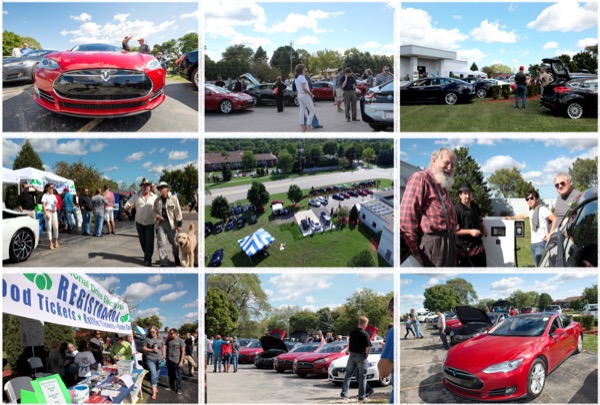The organizers behind the sixth annual National Drive Electric Week – Plug in America, the Sierra Club and the Electric Auto Association – announced new details for the annual event designed to accelerate the national adoption of plug-in electric vehicles (EV). Through test drives, parades, news conferences and announcements of new EV policies and programs, community events demonstrate how EVs are greener, cheaper and more fun to operate than conventional vehicles. This year, National Drive Electric Week 2016 will run September 10-18 with events in more than 100 cities registered and more than 200 expected.
 Since launching in 2011 with events in 29 cities, National Drive Electric Week has experienced rapid growth:
Since launching in 2011 with events in 29 cities, National Drive Electric Week has experienced rapid growth:
- 2013: 100 events in 34 states with over 30,000 participants
- 2014: 152 events in 38 states, five Canadian provinces and three European countries with over 95,000 participants
- 2015: 196 events in 41 states, seven Canadian provinces, Hong Kong and New Zealand with more than 130,000 participants and 9,000+ test rides
National Drive Electric Week is based on the idea that when it comes to transitioning drivers from gasoline to electricity, nothing beats the opportunity to experience the clean, quiet and powerful plug-in vehicles firsthand.
Each year, Plug In America, the Sierra Club and the Electric Auto Association team up with local groups to organize events, which typically feature all-electric and plug-in hybrid electric cars from every automaker on the market. National Drive Electric Week events are linked to increased plug-in vehicle sales, which have jumped by as much as 23 percent the month after.
“Electric vehicles provide an important 21st-century solution to climate disruption,” said Sierra Club’s Electric Vehicle Initiative Director Gina Coplon-Newfield. “These cars are not only better for our climate, improving air quality and reducing our dependence on dirty fuels, but they save consumers money while also being fun and convenient to drive. National Drive Electric Week provides consumers, media and policymakers the perfect opportunity to understand why more than one million drivers around the globe are making the switch to electric.”
“Americans are increasingly saying goodbye to gas stations and hello to a high performance, smooth and quiet driving experience,” said Plug In America’s Executive Director Joel Levin. “U.S. plug-in vehicle ownership has jumped by almost 50 percent since the beginning of last year. When you consider that nearly 400,000 people pre-ordered Tesla’s Model 3, it’s clear that plug-in cars are becoming mainstream.”
“With plug-in vehicles no longer rare sightings and carmakers around the world expanding their offerings today – it’s different than even just five years ago,” said Chairman of the Electric Auto Association Ron Freund. “Our events, in virtually every major US city, enable drivers everywhere to try out electric vehicles, test drive and ask questions in a relaxed, informational setting.”
The environmental and financial benefits combined with the growing convenience of electric vehicles, from longer ranges to expanding charging infrastructure, are causing a steady increase in use. Plug-in electric vehicles are selling at a faster pace than the first generation of hybrid cars. Even with significantly lower gas prices, EV sales were much higher in the first quarter of 2016 than they were in the first quarter of 2015.
Each year, American passenger cars and trucks, through vehicle tailpipe, oil extraction and transport emissions, spew upward of three trillion tons of carbon pollution into the air by burning about 121 billion gallons of gasoline.
“A switch to fully electric and plug-in hybrid electric vehicles, which require little or no gasoline and emit little or no tailpipe pollution, presents a critical solution to slash pollution, create American jobs, move beyond dirty fuels and forever change the impact of vehicles on our planet,” said Coplon-Newfield.
Thanks to federal, state and industry rebates and tax credits, as well decreasing prices in EV technology and the much lower price of electricity versus gasoline, the cost of owning and operating an electric vehicle is now notably lower than that of many gasoline-fuelled vehicles.
“With fewer moving parts – no mufflers, catalytic converters, or even oil changes – EVs are both cheaper to fuel and maintain than conventional vehicles,” said Levin. “And best of all, many drivers quickly learn they don’t need to waste time “going somewhere” just to refuel their ride. They just head home to do it!”
Find an event near you (additional events to be announced), volunteer or launch an event in your community, view previous media announcements and coverage. Learn more about #NDEW2016 and how to #DriveElectric at DriveElectricWeek.org.


